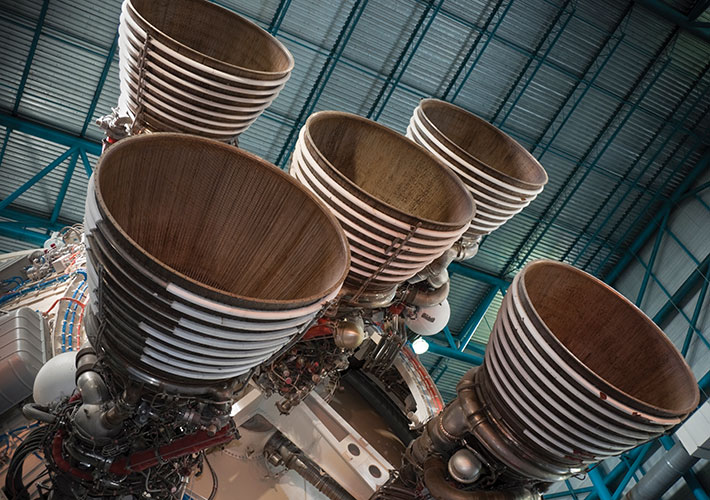Driving Toward Accuracy and Reliability

Driving Toward Accuracy and Reliability
From its founding over 56 years ago, Nanmac’s mission has been to develop and design standard and custom thermocouples and resistance temperature detectors. We also supply all the materials for thermal system sensing and display circuits.
Early on, it was not clear how to compare and report how these devices work. And as these systems became more complex and embedded in other products such as rocket engines, medical devices, and autos (engines, transmissions, etc.), consistent measurement results of the processing temperatures and environments became more critical to not only achieving high levels of quality assurance but as a way to compare their performance on a worldwide basis.
Continuous process improvement is a powerful tool for better product performance, making higher quality focused systems, and reducing costs. Accomplishing these goals requires standards, ones that are agreed to by the entire industry.
Nanmac has adopted and implemented ASTM standards for temperature measurement as a key to achieving continuous process improvement. This also provides our customers with a reliable and consistent way of interpreting results and has helped them make better products at a lower cost. Our competitiveness has been driven in part by the clear definitions and test methods in these standards.
ASTM standards such as the calibration test method E220 have helped our U.S. and International customers gain a common understanding and definition across many cultural and language barriers. For example, how do ASTM standards help customers meet the ASM2750E standard for aerospace heat treating performance and reliability requirements? These ASM2750E standards also provide Nanmac and its worldwide customers with solid guidelines by integrating the requirements in ASTM standard E220 for temperature apparatus measuring equipment.
These requirements, in turn, help to assure that the results are both traceable to NIST (National Institute of Standards and Technology) but also can be replicated in many locations. By doing so, Nanmac has increased its exports to a diverse number of countries such as China, South Korea, and Japan. More than 30 percent of its gross sales are exported, a testimony to the value of adopting and meeting these standards.
While thermocouples and resistance temperature detectors have been in use for over 50 years and the market is fairly static, the need for these types of measuring devices and systems has continued to evolve to meet the new demands of ever more complex alloys, devices, new production methods, and products that have resulted from new technologies like mineral-insulated, metal-sheathed thermocouples; 3D printing; light-emitting diode glass; carbon fiber; etc.
These methods and processes require that this quite staid analog temperature sensing product also evolve by using new higher temperature refractory materials like molybdenum and tantalum, and ceramic materials like alumina and even silicon carbide materials. Evolving into these areas helps us address the ever more challenging environments in the furnace and higher temperatures up to 2200°C or higher.
A new challenge that Nanmac is addressing, which we have already submitted to the ASTM committee on temperature measurement (E20), is establishing a method and process to reliably calibrate sheathed thermocouples over 1650°C. Many manufacturers who are producing sapphire ingots already are at a temperature of 2050°C and higher. Sheathed thermocouples are necessary because of the environments that attack the bare thermocouple wires and even their insulators, reducing life and reliability. Since the value of some of the products that are processed at these temperatures can exceed $250,000, this is both a technical and a protection of product value issue. Driving temperature accuracies to 2-7°C at these temperatures can produce less stress and yield higher purity in the resulting product. We are, as a company and as an industry, not quite there yet, but are working towards these goals, partly through standards.
This rather staid and very well-established industry is still rising to meet new challenges even in this digital age. Besides thermocouples and RTDS, the balance of the temperature sensing and display system is also changing. ASTM has standardized the connectors that are used to attach sensing devices to other parts of the measurement system.
For example, the ASTM specification for thermocouple connectors (E1129) helps us work with our customers to design, apply, and assemble the accurate thermocouples to the display and control system with a seamless throughput to maintain accuracy and data purity. Nanmac doesn’t build connectors, but the ASTM standard helps us to deliver the right solution across many platforms by working with our suppliers and our customers to establish a solid baseline and product performance objectives.
We know that our customers, and their processes, require some very sophisticated sensing accuracies. We don’t want to add questionable components that prevent our customers from achieving their product performance because we missed a critical connection.
Nanmac regularly shares with our customers the importance of using, meeting, and working with ASTM standards, and we work to proactively improve these standards to meet the ever changing demands of the market. Nanmac seeks our customers’ input so that we can contribute to ASTM standards and actively work towards advancing the value of these standards toward improving our industries and Nanmac’s quality and performance excellence.
Herb Dwyer is the chief operating officer and general manager of Nanmac Inc.